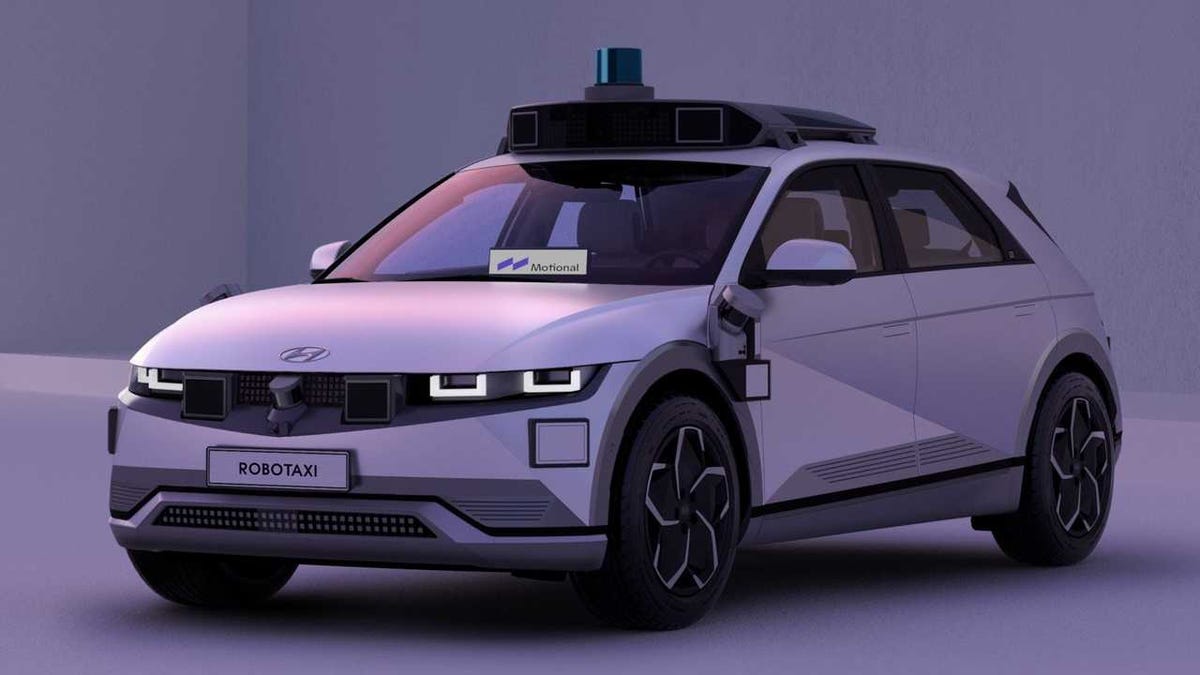
Taxis are excellent candidates to become the go-to early use case for self-driving cars in the wild. But to get there, autonomous vehicle developers face a daunting challenge: equipping their cars to meet an array of scenarios than can’t be fully anticipated.
AI and deep learning tools have been the secret sauce for self-driving car programs, endowing vehicles with the adaptability to face new challenges and learn from them. The most difficult of these challenges are what developer Motional calls “edge situations,” and when the goal is to build a safe robotaxi, identifying, and solving for these outliers is a technological imperative. To do this, Motional has developed its own Continuous Learning Framework, or CLF, that helps its vehicles get smarter with each mile they drive.
While Motional’s new IONIQ 5 robotaxi runs on electricity, a spokesperson recently quipped that the CLF is powered by data: terabytes of data are collected every day by Motional’s vehicles mapping cities throughout the U.S. CLF works like a closed-loop flywheel: Each step in the process is important, and completing one step advances the next step forward. As the inflow of data coming from the company’s vehicles grows, the flywheel is expected to turn faster, making it easier to accelerate the pace of learning, solve for edge cases, map new ODDs, and expand into new markets. This machine learning-based system allows Motional to automatically improve performance as they collect more data, and it does this by specifically targeting the rare cases.
For a deeper dive into how this CLF process and data helps Motional improve performance, I recently connected with Sammy Omari, VP of Engineering & Head Autonomy.
GN: Tell us more about the Continuous Learning Framework (CLF) and why Motional developed it?
Sammy Omari: At Motional, we’re developing level 4 robotaxis – autonomous vehicles that do not require a driver at the steering wheel. We will be deploying our robotaxis in major markets through our partnerships with ride-hailing networks. In order to achieve wide-scale level 4 deployments, our vehicles need to be able to recognize and safely navigate the many unpredictable and unusual road scenarios that human drivers also face.
To reach this level of sophistication, we’ve developed a Continuous Learning Framework (CLF), which uses machine learning principles to make our AVs more experienced and safer with every mile they drive. Motional’s CLF is a revolutionary machine learning-based system that allows the team to automatically improve performance as we collect more data – and it does this by specifically mind for the rare situations that our vehicles might encounter. The CLF works like a closed-loop flywheel: each step in the process is important, and completing one step advances the next step forward. The entire system is powered by real-world data collected by our vehicles.
GN: What type of rare cases or outliers does Motional target through the CLF?
Sammy Omari: The vast majority of the time, driving from one point to another is uneventful and relatively mundane. However, occasionally something unusual or “exciting” happens which involves a broad range of rare and unique driving experiences – called edge cases. These edge cases that Motional targets through CLF can include vehicles running red lights or violating the right of way, pedestrians darting into traffic, cyclists carrying surfboards on their backs, racing trikes, and other types of road users or behavior that we don’t encounter every day.
GN: How does Motional utilize data gathered to help improve vehicle performance?
Sammy Omari: Through the CLF, we’re able to find those rare edge cases in large volumes of data, create training data through automatic and manual data annotation, retain our machine learning models using that data, and then evaluate the updated models.
Motional’s Scenario Search Engine allows developers to quickly search Motional’s vast drivelog database so they can introspect and visualize the results in seconds. This scenario query can run every time our autonomous vehicles are on the road collecting data. When we collect a sufficient number of samples and expand our training data, we can then retrain the machine learning models.
We’ve built this machine learning-based flywheel that allows us to automatically improve performance as we collect more data – and it does this by specifically targeting the rare edge cases. As the inflow of data coming from our vehicles grows, the flywheel will turn faster, making it easier to accelerate the pace of learning, solve for edge cases, map new ODDs, and expand into new markets.
GN: What does this mean for Motional’s future growth?
Sammy Omari: Our innovative approach to machine learning helps us create smarter, safer autonomous vehicles that can navigate a wide range of complex environments. This allows us to deploy our vehicles in new markets faster, which ultimately will improve road safety more broadly.























